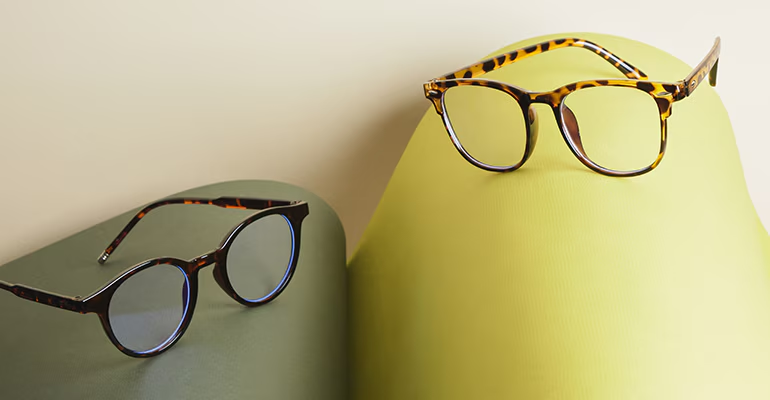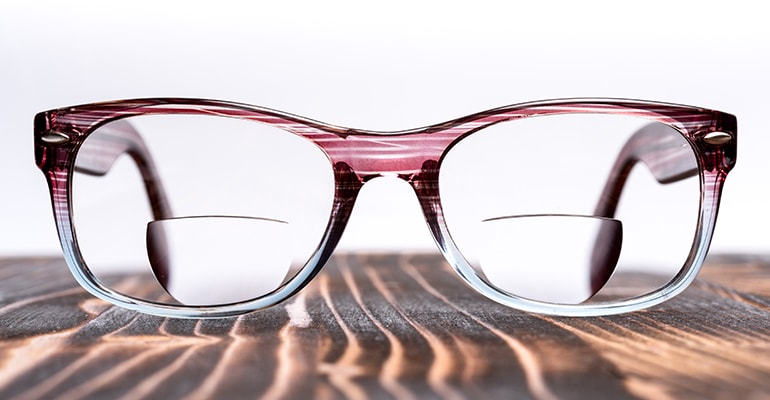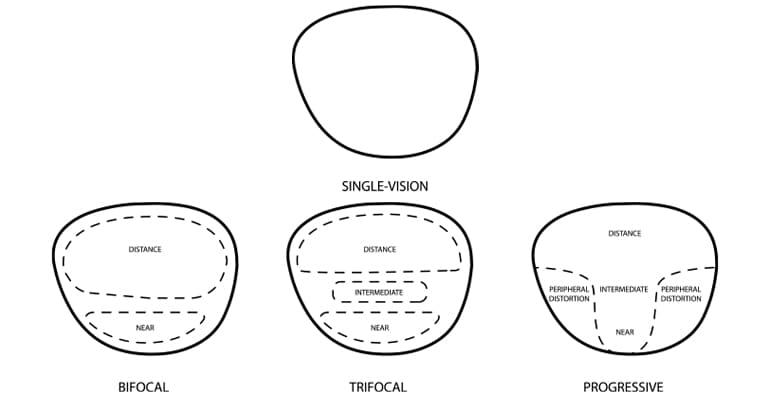Bifocal Lenses or Progressive Lenses?
May 14, 2023

Under normal circumstances, presbyopia will gradually appear only after the age of 40. However, in recent years, due to the poor eye habits, more and more people have presbyopia in advance, and coupled with a number of people with myopia in China, the number of people with myopia as well as presbyopia has increased dramatically, so the demands for bifocal lenses and progressive lenses have also increased. So which of these two types of lenses is the best choice for the myopic-presbyopia?
Advantages of Bifocal Lenses
Bifocals, as the name implies, have two luminosities. Generally the top is the luminosity for seeing far away, the top is used to see far away, such as driving and walking. The bottom is the near luminosity, which is used to see near places, such as reading books, playing with cell phones and so on. When bifocal lenses were first introduced, they were seen as a boon to people with myopia and presbyopia, eliminating the need to take off and wear glasses frequently.
Disadvantages of Bifocal Lenses
However, as people use them, they find that there are many disadvantages of bifocals.
First of all, the biggest disadvantage of these eyeglasses with bifocal lenses is that there are only two luminosities, but there is no transition between looking far and looking near, so it is easy to produce prismatic phenomenon which can make you accidentally fall down when wearing. So it is not very safe for wearers, especially the elderly wearers.
Secondly, there is an obvious disadvantage of bifocal lenses, which is that if you look closely at bifocal lenses, you can observe a clear line of demarcation between the two luminosities on the lenses. So aesthetically, it is not very beautiful. In terms of privacy, it can be awkward for younger wearers because of the distinctive features of bifocal lenses.

Advantages of Progressive Lenses
- In terms of appearance, progressive lenses are basically indistinguishable from ordinary single-vision glasses, and the line of demarcation is not easily visible. Because only the wearer can feel the difference in luminosity in different areas, they are more suitable for people who want to protect their privacy.
- In terms of functionality, it can take into account the need to see far, medium and close, and will be more comfortable when looking at medium distance. And there is a transition zone, the vision will also be clearer. Therefore, progressive lenses are also better than bifocals in terms of effectiveness.

Disadvantages of Progressive Lenses
When you first wear eyeglasses with progressive lenses, you may get slightly dizzy and walk shakily, so you should be careful when walking up and down stairs. When you start wearing glasses with progressive lenses, your spatial perception will change, and your sense of distance and depth of objects will change. It is not suitable for first-time wearers to drive immediately, do strenuous exercise, and watch movies with eyes turned down. You may also experience some mild discomfort in your eyes.
Similarities and Differences
Similarities
Both bifocals and progressive lenses can help you see far and near with just one pair of glasses, they are suitable for people with myopia and presbyopia, and are much more convenient than ordinary single-light lenses.
Differences
- Bifocals have only two luminosities, the top is used to see far and the bottom is to see near. There is no transition in the middle and no area to see the distance, so in actual use, there will be a series of safety hazards. The most obvious difference between progressive lenses and bifocal lenses, in addition to the far area above and the near area below, is that there is an additional transition area in the middle, namely the progressive area. For older wearers, progressive glasses are safer to use.
- The appearance of bifocal lenses is so obvious that as long as the wearer raises his or her head slightly, onlookers can clearly observe the deformation of the wearer's eyeglasses. Progressive lenses, on the other hand, are no different from ordinary eyeglasses, so the wearer does not need to worry about exposing his or her privacy.

